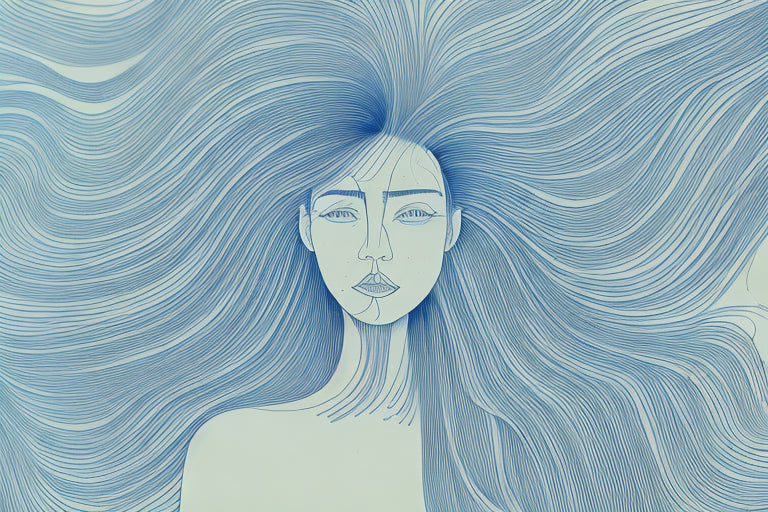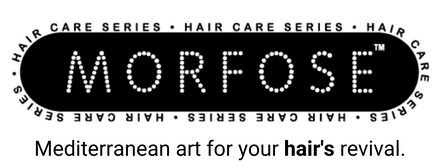7 Common Hair Styling Mistakes That Cause Split Ends
Posted by MORFOSE COSMETICS

7 Common Hair Styling Mistakes That Cause Split Ends
Split ends are a common hair problem that many people struggle with. They occur when the ends of your hair split into two or more strands, making your hair look weak, dry, and damaged. Split ends are often regarded as a sign of unhealthy hair, and they can be caused by various factors, including genetics, improper hair care, and heat styling. In this article, we will discuss seven common hair styling mistakes that can cause split ends and offer tips on how to avoid them.
Understanding Split Ends and Their Causes
What are Split Ends?
Split ends are a common hair problem that can affect anyone, regardless of hair type or texture. They occur when the protective outer layer of the hair shaft (cuticle) is damaged, causing the inner layer (cortex) to become exposed. As a result, the hair fibers split into two or more strands, making the ends of your hair appear frayed and damaged.
Split ends can make your hair look dull, dry, and lifeless. They can also make it difficult to style your hair, as split ends tend to tangle easily and are more prone to breakage.
Factors Contributing to Split Ends
Several factors contribute to split ends, including:
- Overusing heat styling tools: Curling irons, straighteners, and blow dryers can all damage your hair if used too often or at high temperatures. The heat can weaken the hair shaft and cause split ends to form.
- Brushing wet hair: Wet hair is more fragile than dry hair, and brushing it can cause the strands to stretch and break. This can lead to split ends and other types of damage.
- Using the wrong hair accessories: Some hair accessories, such as elastic bands and hair clips, can cause damage to your hair if they are too tight or used too often. They can pull on your hair and cause split ends to form.
- Skipping regular hair trims: Regular hair trims are essential for maintaining healthy hair. If you go too long without trimming your hair, split ends can start to form and travel up the hair shaft, causing even more damage.
Understanding these factors is essential to prevent split ends and keep your hair looking healthy and beautiful. To avoid split ends, try to limit your use of heat styling tools, use a wide-tooth comb to detangle wet hair, choose hair accessories that are gentle on your hair, and make sure to get regular hair trims.
You can also take steps to nourish and protect your hair from the inside out. Eating a balanced diet rich in vitamins and minerals can help keep your hair healthy and strong. Additionally, using a deep conditioning treatment once a week can help repair and prevent split ends.
Mistake #1: Overusing Heat Styling Tools
The Dangers of Excessive Heat
Using heat styling tools like blow dryers, flat irons, and curling irons is a popular way to achieve various hairstyles. However, using these tools regularly and on high heat can cause significant damage to your hair, leading to split ends and breakage.
When you use heat styling tools, the high temperature can cause your hair cuticles to open up, making them more susceptible to damage. The heat can also dry out your hair, making it brittle and prone to breakage. Additionally, using heat styling tools too frequently can cause your hair to lose its natural shine and luster, leaving it looking dull and lifeless.
Tips for Safe Heat Styling
To avoid split ends caused by heat styling, it is essential to use these tools safely. Here are some tips to keep in mind:
- Use a heat protectant spray before styling: A heat protectant spray can help to create a barrier between your hair and the heat, reducing the damage caused by high temperatures.
- Reduce the heat setting on your tools: Lowering the heat setting on your blow dryer, flat iron, or curling iron can help to minimize damage to your hair. Try to use the lowest heat setting possible to achieve your desired style.
- Avoid using heat styling tools every day: Giving your hair a break from heat styling can help to prevent damage and promote healthy hair growth. Try to limit your use of heat styling tools to a few times a week.
Another way to reduce the damage caused by heat styling is to choose tools that are designed to be gentler on your hair. Look for tools with ceramic or tourmaline plates, which can distribute heat more evenly and reduce the risk of hot spots that can cause damage. Additionally, using a hair dryer with a diffuser attachment can help to minimize heat damage while still achieving your desired style.
Mistake #2: Brushing Wet Hair
Why Wet Hair is More Vulnerable
Wet hair is more prone to breakage and damage than dry hair. This is because when hair is wet, it becomes weaker and more elastic, making it more vulnerable to damage. Brushing wet hair can cause your hair strands to stretch and snap, leading to split ends and breakage. This is why it is important to be gentle with your hair when it is wet.
Proper Techniques for Detangling Wet Hair
Instead of brushing your wet hair, opt for a wide-toothed comb or detangling brush. These tools are designed to gently remove tangles without causing damage to your hair. Start by applying a detangling spray or conditioner to your hair before combing it gently. This will help to lubricate your hair and make it easier to detangle.
When detangling your hair, start at the ends and work your way up to the roots. This will prevent tugging and pulling on your hair, which can cause breakage. Take your time and be patient, especially if your hair is particularly tangled. Remember that it is better to take a few extra minutes to detangle your hair properly than to cause damage that will take much longer to repair.
Another technique that can help to prevent damage when detangling wet hair is to section your hair. This will make it easier to work through tangles without pulling on your hair. Use clips or hair ties to divide your hair into smaller sections, and then detangle each section one at a time.
Finally, be sure to use the right products for your hair type. If you have fine hair, for example, you may want to use a lightweight detangling spray that won't weigh your hair down. If you have thick, curly hair, on the other hand, you may need a more heavy-duty detangling conditioner to help you work through tangles.
By following these proper techniques for detangling wet hair, you can help to prevent breakage and damage, and keep your hair looking healthy and beautiful.
Mistake #3: Using the Wrong Hair Accessories
When it comes to hair accessories, it's important to choose wisely. Using the wrong ones can lead to significant damage to your hair, leading to split ends and breakage. Here are some damaging hair accessories to avoid:
Elastics
Elastic bands that are too tight can pull and tear your hair, causing split ends and breakage. If you must use an elastic band, choose one that is gentle on your hair, like a fabric-covered one.
Metal Hair Accessories
Hair accessories made of metal can cause significant damage to your hair. The metal can snag and pull on your hair, leading to breakage and split ends. Avoid metal hair accessories and opt for gentler alternatives.
Choosing Gentle Hair Accessories
So, what hair accessories should you use instead? Here are some gentle options:
Scrunchies
Scrunchies are a great option for those looking for a gentle hair accessory. They are made of soft fabric and are less likely to cause damage to your hair.
Ribbon Ties
Ribbon ties are another gentle option. They are made of soft material and won't pull or snag your hair like other hair ties.
Hair Claw Clips
Hair claw clips are also a great option. They are gentle on your hair and won't cause any damage or breakage. Plus, they come in a variety of styles and sizes, making it easy to find one that works for you.
By choosing the right hair accessories, you can help protect your hair from damage and keep it looking healthy and beautiful.
Mistake #4: Skipping Regular Hair Trims
The Importance of Regular Trims
Regular hair trims are essential for preventing split ends and keeping your hair healthy and beautiful. Split ends occur when the protective outer layer of your hair, called the cuticle, wears away, leaving the inner layers of your hair exposed to damage. When you skip trims, your hair ends become more prone to damage and split ends, making it harder to prevent further damage. Split ends can also cause your hair to look frizzy and dull, making it difficult to style.
Regular trims not only prevent split ends, but they also help to keep your hair looking and feeling healthy. Trimming your hair removes any dry or damaged ends, which can help to improve the overall texture and appearance of your hair. Additionally, regular trims can help to promote healthy hair growth by removing any split ends that may be inhibiting growth.
How Often Should You Trim Your Hair?
It is recommended to trim your hair every six to eight weeks to keep your hair ends healthy and prevent split ends. However, the frequency of trims may vary depending on your hair type and the condition of your hair. For example, if you have very dry or damaged hair, you may need to trim your hair more frequently to keep it healthy. On the other hand, if you have very healthy hair, you may be able to go longer between trims.
It is also important to note that regular trims are not the only factor in maintaining healthy hair. Other factors, such as a healthy diet, proper hair care, and avoiding excessive heat styling, also play a role in the overall health and appearance of your hair. By taking care of your hair both inside and out, you can ensure that your hair stays healthy, strong, and beautiful.
Conclusion
By avoiding these common hair styling mistakes, you can prevent split ends and keep your hair looking healthy, shiny, and beautiful. Keep these tips in mind and embrace healthy hair care habits to keep your hair healthy and free from split ends.


